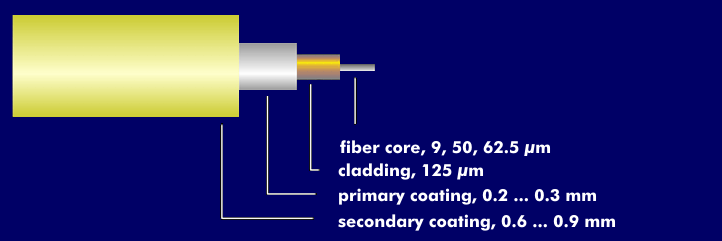secondary coating
The secondary coating is a second protective layer for glass fibers that serves as the main coating. This coating is a protective sheath made of a plastic combination, which can be applied directly to the primary coating.
The secondary coating has the task of protecting the fiber from thermal stresses over a defined temperature range from approx. -20 °C to +80 °C. The secondary coating itself must not be exposed to thermal stresses. At the same time, the secondary coating itself must not place any additional load on the fiber, since any load leads to bending and curvature and thus causes additional losses.
Depending on the glass fiber structure, the secondary coating can be firmly or loosely laid over the primary coating. Since no secondary coating meets all the demands placed on it, different core versions have been developed that have application-specific advantages. A distinction is therefore made between solid cor es and hollow cores.
In the solid or compact core, the secondary coating had a standard dimension of 900 µm, which was reduced to 600 µm. When assembling FO cables, both coatings are removed so that the FO core can be inserted into the ferrule of the FO connector.

